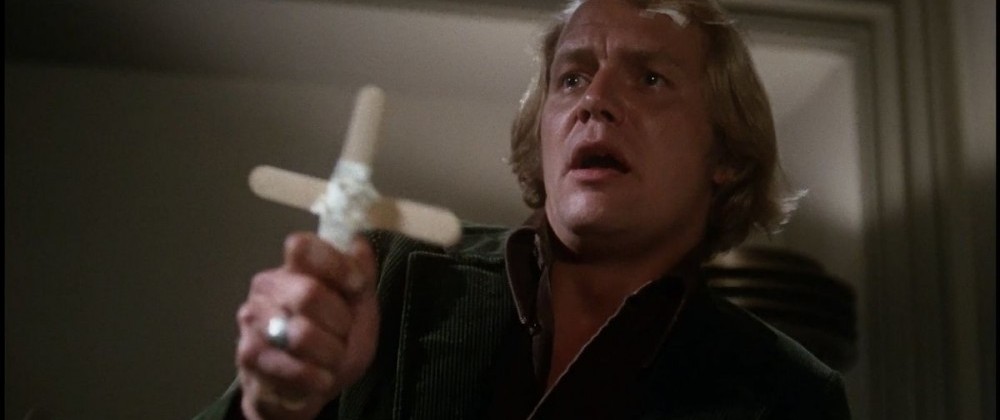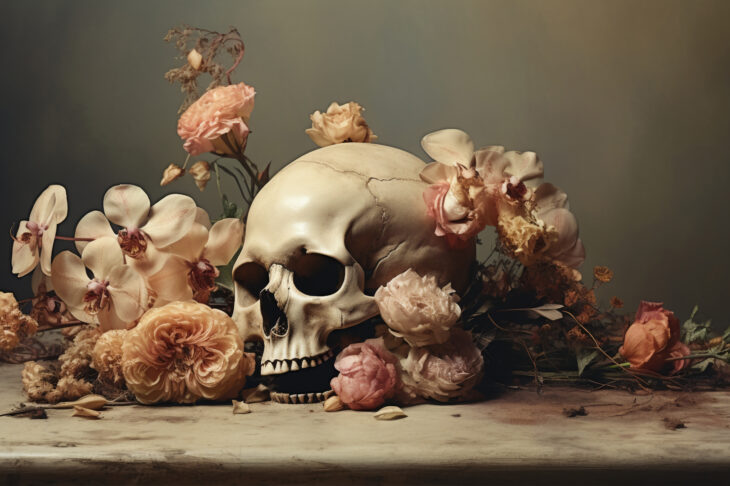
Salem’s Lot Vampires: A Complete Guide
One of the first horror novels I read at the tender age of 12 was by Stephen King’s and starred the gruesome Salem’s Lot vampires. It was his second published novel, the first being the shorter and more visceral Carrie.
A few years later, the book was made into a TV movie with Starsky and Hutch heart throb David Soul in the lead role of Ben Mears.
What is the Plot of Salem’s Lot?
Salem’s Lot is a horror novel first published in 1975. The book tells the story of a small town called Jerusalem’s Lot, or Salem’s Lot for short, in Maine, which becomes overrun by vampires.
The plot follows Ben Mears, a writer who returns to the town, where he spent some of his childhood, to write a book about the local Marsten House, an abandoned mansion that has a dark and deadly history. While in town, he falls in love with Susan Norton, a local resident.
As Ben settles into Salem’s Lot, strange occurrences begin to happen around town. The Marsten House is purchased by two mysterious men, Richard Straker and Kurt Barlow, and a young boy disappears from the town. Gradually, the residents of the town become aware that a vampire plague is sweeping through Salem’s Lot, with the Marsten House serving as a hub.
Ben, Susan, and a small group of survivors band together to try to defeat the Salem’s Lot vampires and save the town. They are aided by a kindly local priest, Father Callahan, who is struggling with his faith. The group must confront the vampires and try to destroy them before the town is lost forever.

Who Are the Salem’s Lot Vampires?
Kurt Barlow is the mysterious and powerful vampire who plays a pivotal role in Stephen King’s novel. He is the main antagonist of the story along with his human business partner Richard Straker, and is responsible for the vampire plague that spreads throughout the town.
Barlow and Straker are first introduced when they purchase the abandoned Marsten House in Salem’s Lot. From there, Barlow sets about turning the town into his own personal hunting ground, converting many of its residents into vampires and using them to help him spread the infection.
Although he is rarely seen in person, Barlow exerts a powerful influence. His presence is felt throughout the book, as he lurks in the shadows, manipulating events and people to suit his own ends. He is depicted as a cold, calculating figure, devoid of any human emotion or empathy.
In the climax of the book, Barlow finally reveals himself to the small group of survivors who are attempting to stop him, including Ben Mears. They engage in a desperate battle against the vampire, but Barlow proves to be a formidable opponent. In the end, he is ultimately defeated by Ben Mears and Mark Petrie, but his legacy lives on in the town of Salem’s Lot, which is forever changed by his presence.
As the master vampire in Salem’s Lot, Barlow can turn others and some of the notable ones in the book are:
- Danny Glick – Danny is a young boy who dies and becomes a vampire after being bitten by Barlow. He returns to his family’s home and attacks his parents and his friend Mark Petrie.
- Ralphie Glick – Danny’s younger brother, who also dies and becomes a vampire. He attacks Mark Petrie and his friends at the Marsten House.
- Susan Norton – She is the love interest of the protagonist, Ben Mears. Susan is turned into a vampire by Barlow and is killed by Mears.
- Mike Ryerson – He is the caretaker of the cemetery where Barlow’s coffin is hidden. Ryerson is turned into a vampire by Barlow and is later killed by Ben Mears.

What is the Marsten House?
Marsten House is a prominent location in Stephen King’s novel and plays a significant role in the story’s events. The house is an old and abandoned mansion located on a hill overlooking the town and it was once owned by a man named Hubert “Hubie” Marsten. He was rumoured to have committed suicide in the house after killing his wife.
Marsten House serves as a symbol of the town’s dark past and is also the source of the vampire threat that plagues Salem’s Lot because Straker and Barlow set up home there. The ghost of Hubie Marsten is said to haunt the house and is responsible for the evil that resides there.
Throughout the novel, Marsten House is a place of terror and dread. It draws characters like Ben Mears and Mark Petrie to investigate its dark history, and it serves as the site of several significant events, including the final confrontation between Mears and the vampires, including Barlow. The Marsten House and the ghost of Hubie Marsten represent the deep-rooted evil that exists in Salem’s Lot and embody the novel’s underlying theme of the darkness that lies beneath the surface of small-town life.

Is Salem’s Lot a Real Place?
No, Salem’s Lot is not a real place in Maine. It was created by author Stephen King and is based on a combination of real-life locations that he was familiar with, such as Durham, Maine, where he lived for a time, and the town of Harmony where he worked as a teacher.
While there are many real towns in Maine that share similarities with Salem’s Lot, such as small, close-knit communities with a rich history and plenty of spooky old houses, there is no actual place called Salem’s Lot. However, King’s vivid descriptions of the town and its inhabitants have helped to create a sense of place that feels very real to readers, and the book remains a classic of horror fiction.
Why Does the Salem’s Lot Vampire Look Like Nosferatu?
In Stephen King’s novel, the Kurt Barlow is described as having physical features similar to those of Count Orlok, the vampire character in the 1922 silent film Nosferatu. Barlow is described as having elongated fingers, pointed ears, and sharp teeth, just like Orlok.
The reason for this resemblance is likely an intentional homage to Nosferatu, which is widely considered to be one of the most influential vampire films ever made. The film’s director, F.W. Murnau, did not have the rights to adapt Bram Stoker’s Dracula and instead made an unauthorized adaptation, changing the vampire’s name to Count Orlok.
The character design of Count Orlok in Nosferatu has become an iconic representation of vampires in popular culture, and its influence can be seen in many subsequent vampire films and in literature. In Salem’s Lot, King may have chosen to include a vampire with physical similarities to Count Orlok as a nod to the classic film that has inspired countless adaptations and iterations of the vampire mythos. Additionally, the resemblance adds to the overall sense of dread and horror in the novel, as readers may associate Barlow’s appearance with the terrifying imagery of Count Orlok. Here we have a lead villain who has little or no gothic romance as played in movies about Dracula, it seems more connected with the emotionless killer of Peter Benchley’s Jaws.
Is Salem’s Lot a Retelling of Dracula?
Not really. The original Dracula novel was a gothic romance with an underlying frisson of sex and sexuality. While subsequent movies took a slightly different stance, the danger is largely localised and focused on the main protagonists. The Salem’s Lot vampires are more like a plague that spreads exponentially to takeover the town and, apart from the relationship between Ben and Susan, there is little love interest or indeed sexual frisson.
In addition, Dracula is often seen as a sympathetic, cursed character and has a level of sophistication. With the Salem’s Lot vampires there’s a lot of hissing and little in the way of polite conversation. They don’t talk. They float and hiss but there is no great conversation to be had either with lead vampire Kurt Barlow or any of his cursed minions.
10 Weird and Wonderful Facts About Salem Lot’s Vampires
- King was originally planning to write a novel about a haunted house, but he was inspired to switch to a vampire story after a dream about a boy being bitten by a vampire.
- The town of Jerusalem’s Lot is based on King’s hometown of Durham, Maine.
- The novel was originally titled “Second Coming,” but King’s publisher asked him to change it to “Salem’s Lot” because they thought it sounded more commercial.
- The character of Father Callahan, who later appears in King’s “The Dark Tower” series, was originally intended to be a minor character in “Salem’s Lot,” but King became so interested in him that he gave him a larger role.
- King has said that he based the character of Ben Mears, the novel’s protagonist, on himself.
- The book was published in 1975, the same year as the film “Jaws,” and both works are credited with popularizing the “summer blockbuster” phenomenon.
- The novel’s epilogue features a character named Mark Petrie, who is shown to have become a successful horror novelist. King has said that Petrie is meant to be a fictionalized version of himself.
- In the novel, the character of Susan Norton is turned into a vampire by Kurt Barlow. In the 1979 TV miniseries adaptation, Susan is instead turned into a zombie.
- The novel features a cameo appearance by a character named Richard Straker, who is mentioned in passing in King’s novel “The Dark Tower IV: Wizard and Glass.”
- In the novel, the character of Ben Mears writes a book about the events in Jerusalem’s Lot. King has said that this book, which is mentioned in passing in several of his other works, is meant to be a fictionalized version of “Salem’s Lot” itself.
Have you got a strange fact about Salem’s Lot vampires? Let us know what it is in the comments section below.

